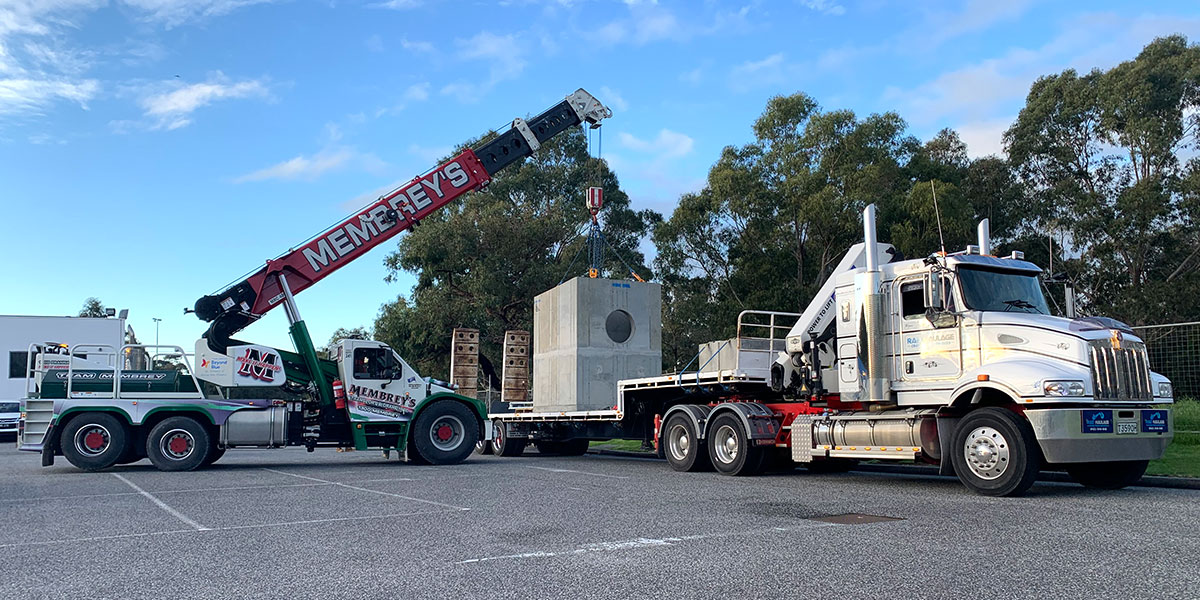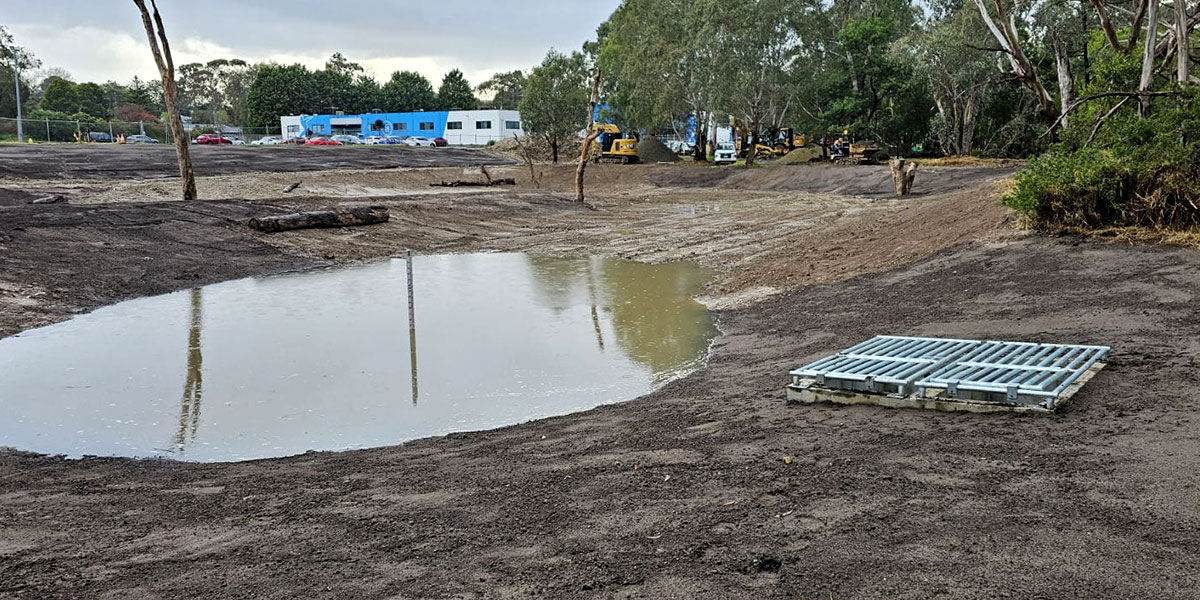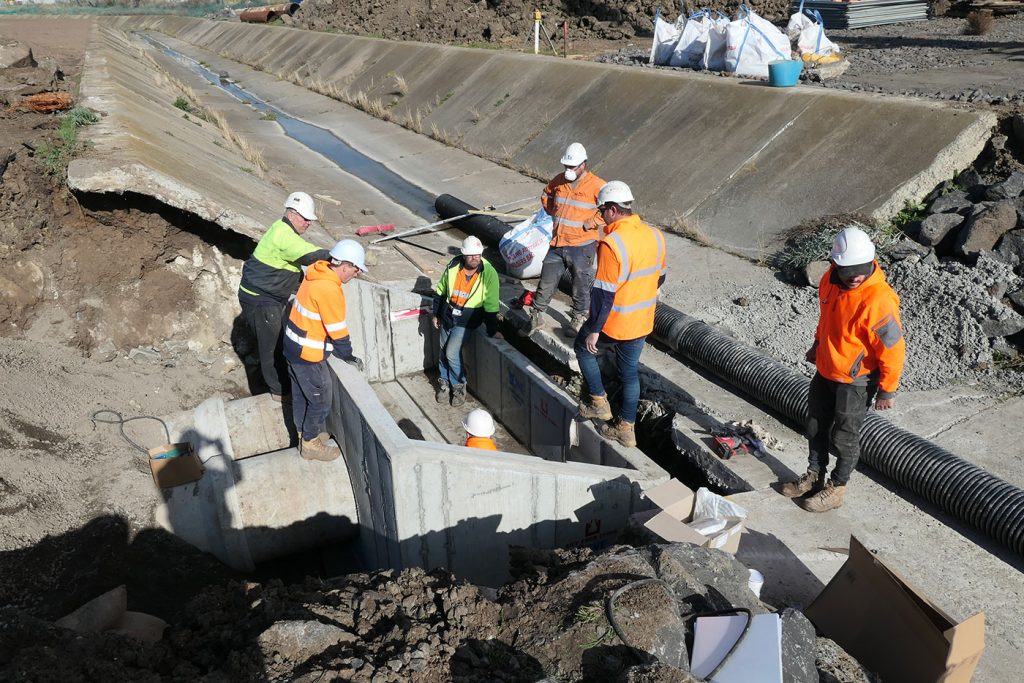Water is the lifeblood of our planet – an essential element that sustains our ecosystems, communities and industry.
Our ability to harness and distribute this precious resource largely relies on water authorities and the crucial infrastructure that encompasses potable water supply, wastewater treatment and stormwater systems.
In the realm of water infrastructure, concrete is a commonly used construction material due to its strength, durability, and resistance to weather and corrosion. While authorities like Melbourne Water have traditionally used concrete poured in-situ for infrastructure works, the use of precast concrete for complex stormwater assets is gaining traction in new water management projects, thanks to various advantages over the in-situ methodology.
Precast Allows Superior Quality Control
Precast concrete products are manufactured in controlled factory environments, allowing for meticulous quality control. The standardised production process used to construct precast stormwater pits and covers ensures that each component meets strict quality standards, reducing the risk of defects and inconsistencies commonly associated with on-site casting. The controlled factory environment is also conducive to a higher quality finished product; precast concrete products often surpass their in-situ equivalents in terms of compressive strength and aesthetic consistency.
Ease of Product Customisation with Precast

A wide degree of customisation is available when constructing in precast due to the flexibility of the precast production process, which incorporates mould manufacture, concrete mix design, and casting and finishing techniques. This enables non-standard products of multiple sizes and shapes to be constructed to spec, in a safe location away from site. Design features such as pipe penetrations, control spindles, lifting points, step irons and more can be cast into the product, avoiding the time and effort required to construct these complex elements on-site. These details are confirmed by the client in a shop drawing approval process prior to production, ensuring the product is purpose-built for its specific application.
Efficiency Gains from Shortened Installation Timeframes
Two significant advantages of precast solutions are the reduced labour requirements and time savings gained from installing precast products, compared to casting the equivalent products on-site. Precast stormwater pits are built off-site and transported to the construction site only when needed. This eliminates the labour-intensive, time-consuming processes of setting up on-site formwork, assembling steel reinforcements, pouring concrete, and waiting for curing. The result is a streamlined construction timeline that minimises disruptions and accelerates project completion.

A real-world example of efficiency gains from precast was on the 2023 Melbourne Water project – Reimagining Blind Creek. Erosion control specialists State Plant Hire contracted SVC to produce a 13-tonne twin-chamber baffle pit, which would house the controls for the outflow levels of the retarding basin. This large, complex product would have required a minimum of two weeks to produce in-situ, during which the site would be exposed to potential disruptions from weather and create an unsafe environment for the concrete workers in the ground cavity.
By utilising a precast concrete option, all that was required was the coordination of logistical requirements and timings, ensuring that delivery of the pit to site would align with the day of crane hire for the pit installation. The resulting installation timeframe for State Plant Hire was drastically reduced to an impressive single-day turnaround.
Using Precast Enables Safer Construction Sites
In water infrastructure projects where sites are in close proximity to live waterways and large bodies of water such as reservoirs or wetlands, the installation of stormwater pit assets is tricky and fraught with risk. Large volumes of water must be pumped out and redirected to gain access to areas for pit installation. The pit must then be installed in a deep ground cavity set at a level lower than the floodway, which can be up to 4m underground. For labourers constructing formwork and pouring concrete in this cavity, it is risky to remain in this environment for an extended period.
Many of the potential safety risks associated with on-site concrete pours are eliminated when using precast products, thanks to the major production processes taking place off-site. Site workers need only prepare the ground cavity and organise crane placement of the pit, as it arrives on-site as a finished product. The use of precast thus contributes significantly to site safety while also enhancing overall construction efficiency.

When Precast Drives Cost Efficiency
Though in-situ concrete pours are typically lower-priced than purchasing the same items in precast concrete, this is not the case for water infrastructure projects where the concrete asset is high in complexity. According to State Plant Hire – a member of Melbourne Water’s maintenance contract panel – the cost to pour an outflow control pit in-situ, when considering its various design features and the associated labour requirements, is quite high and can easily increase. This is due to the expenses incurred when engaging a professional pit building company, which can blow out if there are unexpected delays on-site.
In comparison, the upfront costs of precast concrete products are fixed from the time of quotation, avoiding unexpected budget variations and contributing to better value and cost-effectiveness for projects in wetlands and waterways.

The advantages of using precast concrete for stormwater pits in water infrastructure are clear and compelling.
From improved quality control and consistency to increased site safety, reduced labour requirements, greater time efficiencies and cost savings, precast solutions offer a reliable and efficient alternative to traditional in-situ casting. By embracing precast technology, stormwater projects can benefit from enhanced durability, streamlined construction processes, and a more sustainable approach to building resilient waterway systems.



